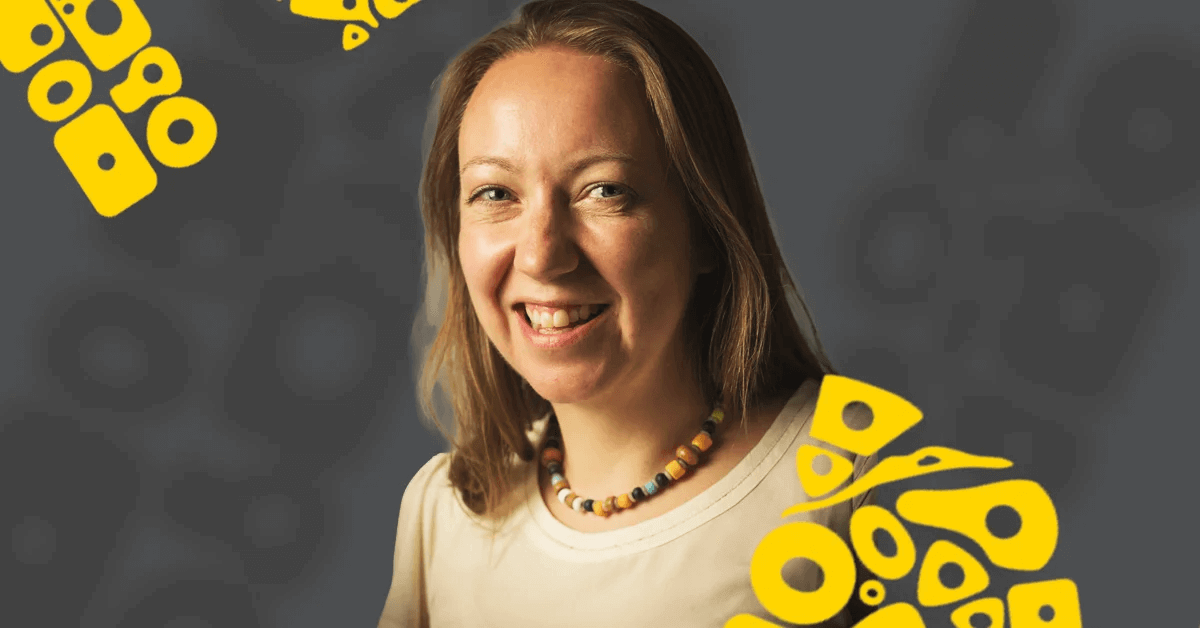Dr Kathryn Garner, Head of Kidney Development at NB
Kathryn has a story to tell. A story of a blinding passion for science, a determination to find answers to how biological systems work, the many technical, political, and personal challenges she encountered in her career, a rough journey through barren terrain, finding a mentor and finally the arrival at an enriched environment where the product of her efforts is now flourishing. This is Kathryn’s success story.

The power of naivety – in science you need to keep asking questions as if you did not know much, and to assume nothing. That is the road to discovery
‘In vitro models are extremely useful to understand how biological pathways work. I started my research when the promise of immortalised kidney cells was great, widely considered the ‘gold standard’ for in vitro studies of glomerular cells such as podocytes. Podocytes are specialized epithelial cells that show signs of stress in diabetic nephropathy. I had some simple experiments to run – stimulate cells with insulin and ask the question whether I could detect phosphorylated Akt (in response to insulin) and podocyte markers, such as WT1 or synaptopodin, to make sure they were the right cells. I got a surprise when the podocyte markers were absent from the immortalised cells altogether. I also learnt that the gold standard immortalised podocytes weren’t responsive to Angiotensin II in another experiment. I had a three-year fellowship, and the clock was ticking’. – Dr Kathryn Garner
Know your gift – be the best you can be, by developing the skills you are good at; that is your unique selling point, the gift you bring to the world.
‘I was always interested in images, and after my art and science degrees, it is not surprising that I have ended up using high content imaging as a tool to support my research on cell signalling dynamics in podocytes. Part of my Intermediate Fellowship research program focused on developing a mathematical model of the Angiotensin II and Tumour Necrosis Factor (TNF) signalling systems in these cells. During my nomadic research journey, I stopped over at the Systems Biology Group at Newcastle University where the mathematical model was developed. Despite their support, I knew I needed to build a research group in a wet-lab environment where I could combine both ‘wet’ and ‘dry’ model making.’ – Dr Kathryn Garner
The value of a mentor – a mentor is a person who has your welfare at heart, and who supports you and enables your development.
‘Once I had developed my mathematical model and had concluded that immortalised podocytes were not the best tools to model diseases such as diabetic nephropathy and chronic kidney disease, I needed a physiologically relevant in vitro model for my studies. I met Colin Brown and discussed having access to primary kidney cells and potentially setting up a collaboration with Newcells Biotech to establish a glomerular model. I had just started at Northumbria University when the pandemic struck. I do not need to remind anyone what challenges that brought, but just say that I ‘hit a wall’, and thankfully the way out came in the form of a research position working with Colin at Newcells Biotech, as Head of Kidney Development. Colin has been the one who kept me pushing forward with my research whilst still in academia. He has been a great mentor. So, I jumped at the opportunity six months ago and now I am part of the Newcells team- where I am supported, valued, listened to and, needless to say, the work is flourishing and the podocytes model underway’. – Dr Kathryn Garner
Newcells team is developing physiological relevant in vitro kidney models for drug safety and efficacy and disease modelling. Our models include proximal tubule cells and glomerular cells. If you would like to learn more about our models or ask for a quote, please contact us.
Interested in reading articles published by Kathryn (see below):
Pope, R. J. P., Garner, K. L., Voliotis, M., Lay, A. C., Betin, V. M. S., Tsaneva-Atanasova, K., Welsh, G. I., Coward, R. J. M. and McArdle, C. A. (2020) ‘An information theoretic approach to insulin sensing by human kidney podocytes.’ Molecular and Cellular Endocrinology. 518: 110976. http://dx.doi.org/10.1016/j.mce.2020.110976
Garner, K. L. (2020) ‘High content imaging for monitoring signalling dynamics in single cells.’ Journal of Molecular Endocrinology. 4: R91-R100. Invited review. https://jme.bioscientifica.com/view/journals/jme/65/4/JME-20-0169.xml
Garner, K. L., Betin, V. M. S., Pinto, V., Graham, M., Abgueguen, E., Barnes, M., Bedford, D. C., McArdle, C. A. and Coward, R. J. M. (2018) ‘Enhanced insulin receptor, but not PI3K, signalling protects podocytes from ER stress.’ Scientific Reports. 8 (1): 3902. https://www.nature.com/articles/s41598-018-22233-9
Garner, K.L., Voliotis, M., Alobaid, H., Perrett, R. M., Pham, T., Tsaneva-Atanasova, K. and McArdle, C. A. (2017) ‘Information transfer via Gonadotropin-Releasing Hormone Receptors to ERK and NFAT: Sensing GnRH and sensing dynamics.’ Journal of the Endocrine Society. 1 (4): 260-77. https://academic.oup.com/jes/article/1/4/260/3058128
Garner, K. L., Perrett, R. M., Voliotis, M., Bowsher, C., Pope, G. R., Pham, T., Caunt, C. J., Tsaneva-Atanasova, K. and McArdle, C. A. (2016) ‘Information Transfer in Gonadotropin-Releasing Hormone (GnRH) Signaling: Extracellular-Regulated Kinase (ERK)-mediated feedback loops control hormone sensing.’ J. Biol. Chem. 291 (5): 2246-59. https://www.jbc.org/article/S0021-9258(20)36063-4/fulltext
You can view all of Kathryn’s articles here.
Share on social media:
Don't miss out on our latest innovations: follow us on Linkedin



